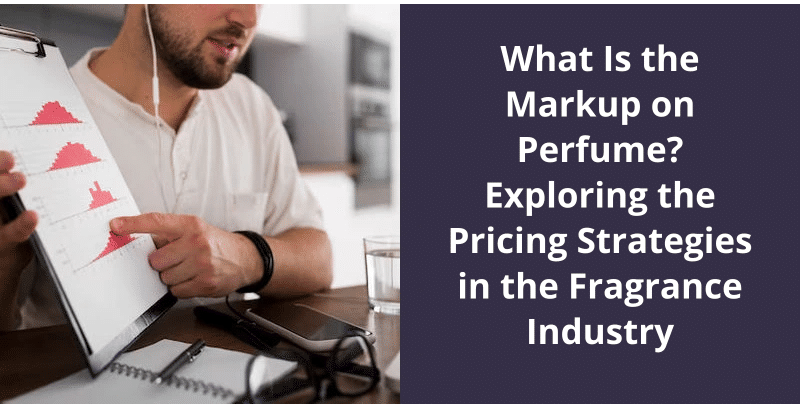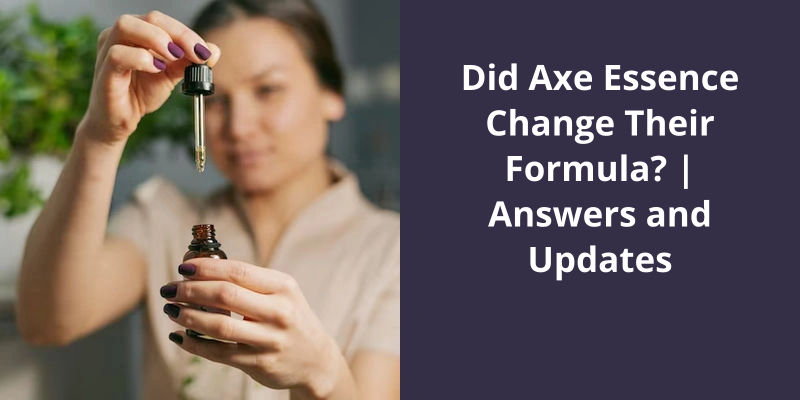The markup on perfume can be quite substantial, often ranging from 60% to as much as 80%. This significant price hike is due to various factors involved in its production, distribution, and marketing. Creating a unique scent requires expensive ingredients and intricate techniques. Cost is also driven up by packaging design, advertising, and shipment, as well as retailer fees. The prestige of the brand is also a key factor in setting high prices. The end price consumers pay not only covers the actual production costs but also these additional overheads and the brand image’s perceived value.

What Makes the Perfume Expensive?
Furthermore, the processing and extraction of these ingredients also plays a major role in the high cost of perfumes. Essential oils, for example, can take large amounts of material to extract just a small amount of oil. It can take up to 1,000 pounds of jasmine flowers to extract 1 pound of oil, making it one of the most expensive ingredients used in perfumery.
Another factor that contributes to the high price tag of perfumes is packaging. Luxury perfume brands often spend a significant amount of money on their packaging, from the bottle design to the box it comes in. This not only adds to the aesthetic value of the perfume but also gives it a luxurious and exclusive feel, which increases it’s perceived value.
Distribution and retail are also aspects that contribute to the cost of perfumes. Luxury perfume brands often have selective distribution, only selling their products in high-end department stores or boutiques. Retailers then add their own markups to the price, which can increase the cost even further.
Finally, the expertise and craftsmanship involved in creating a high-quality perfume are also factors that play a role in the high cost. Master perfumers spend years studying and perfecting their craft, and their skills and experience are reflected in the price of their creations. The blending of the different fragrances to create the final product requires a great deal of precision and expertise, which adds to the cost.
Understanding the importance of the ingredients in your perfume can greatly impact your overall fragrance experience, as the quality of your scent is directly linked to the ingredients that went into creating it. Although synthetic fragrances can often mimic the scents of real flowers, there’s no substitute for the real thing. In this article, we will explore the different components that make up high-quality perfume and how they can affect your fragrance choices.
What Is High Quality Perfume Made Of?
These oils are extracted through a delicate process called enfleurage or distillation, where the flower petals are carefully treated to release their natural fragrance. The resulting oils are highly concentrated and offer a complex, nuanced scent that can’t be replicated through synthetic means.
High-quality perfumes are also made with a carefully curated blend of ingredients. This means that the perfumer will use a combination of top, middle, and base notes to create a cohesive fragrance. The top notes are the first scents you smell when you apply the perfume, and they’re usually light and fresh. Middle notes develop after the top notes have settled, and are usually more floral or spicy. Base notes are the longest-lasting elements in a scent and provide a warm, rich foundation to the fragrance.
Essential oils, for example, can be used to enhance the fragrance and provide therapeutic benefits. Some perfumes also contain fixatives, which help the scent last longer on the skin. These can be natural ingredients like musk or ambergris, or synthetic options like Iso E Super.
Finally, high-quality perfumes are often made by skilled perfumers who’ve trained for years to perfect their craft. These individuals have a deep understanding of fragrance composition and how different scents interact with one another. They’re able to create complex, multi-layered fragrances that are both beautiful and unique. This level of expertise and care can’t be replicated in mass-produced, inexpensive perfumes.
While they may be more expensive than their cheaper counterparts, they offer a level of complexity and artistry that can’t be replicated through synthetic means.
Exploring the History and Evolution of Perfume-Making Techniques and Ingredients.
This article discusses the history and evolution of creating perfumes, including the techniques used and the ingredients used throughout history.
Source: What’re the common ‘ingredients’ to high quality perfumes?..
Despite the challenges, the fragrance market remains a lucrative and competitive industry. According to fragrance and perfume market research, the industry is forecasted to experience steady growth in the coming years. With the right approach and strategy, new players can succeed in this saturated market. Let’s take a closer look at the current state of the perfume business and what it takes to stand out in this crowded space.
Is Perfume Business Saturated?
However, although the perfume market may seem saturated, it’s continually evolving. The market is driven by consumers diverse preferences and changing trends. Different regions of the world have different taste profiles, and even within regions, there are differences in consumers preferences. This creates ample opportunities for savvy entrepreneurs looking to carve out a niche in the market.
Moreover, the fragrance industry isn’t just limited to traditional perfumes. There’s a growing demand for organic and natural fragrances as consumers become more aware of the possible harmful effects of synthetic fragrances. Similarly, there’s a growing trend towards unisex fragrances that appeal to both men and women. The rise of social media influencers, who can generate buzz around new perfumes, also presents an opportunity for new entrants to the market.
Research and development of innovative fragrances and packaging can also differentiate new brands from existing players. Consumers are always on the lookout for unique and exciting scents that reflect their individual personality and lifestyle. Utilizing natural and sustainable ingredients, experimenting with unconventional scent combinations, and aligning with ethical and socially responsible causes can all help a new brand stand out in the crowded market.
Furthermore, the perfume market extends beyond traditional brick-and-mortar stores before. E-commerce platforms have transformed the way consumers shop for fragrances, making it easier for new brands to reach audiences worldwide. Social media platforms, such as Instagram and Facebook, have also democratized advertising, enabling small brands to reach audiences using influencer marketing and short video ads. This trend has led to the rise of D2C (direct-to-consumer) brands that bypass traditional distribution channels.
The profit margins for perfume manufacturers are undoubtedly high, with up to 90% of the price going towards product packaging, overhead costs, and marketing. Surprisingly, the actual liquid content in the bottle is only responsible for 3% of the product’s base cost. Let’s take a closer look at how these stunning profit margins are possible.
What Is the Profit Margin for Perfume Manufacturers?
The reason for such high profit margins is due to the high demand for luxury fragrances and the perceived value of name brand products. Customers are willing to pay premium prices for scents that are associated with prestigious fashion brands. Perfume manufacturers also often invest heavily in marketing campaigns, celebrity endorsements, and packaging designs to draw in customers and increase recognition of their brand. In addition, fragrance ingredients can be expensive and difficult to source, adding to the cost of production.
However, the perfume industry is also subject to a great deal of competition. New scents are released every year, and customers are always on the lookout for the next best thing. This means that manufacturers must constantly innovate and stay ahead of the trends in order to remain relevant. It also means that profit margins can fluctuate based on the popularity of a particular fragrance or brand.
Challenges Faced by Small Perfume Manufacturers in Competing With Large Brands
- Limited budget for advertising and marketing
- Difficulty in sourcing high-quality raw materials
- Lack of brand recognition and customer trust
- Inability to compete on pricing with larger brands due to economies of scale
- Limited distribution channels and retail partnerships
- Lack of access to financing for product development and expansion
- Increased competition from other small perfume manufacturers
- Difficulty in maintaining consistent product quality and scent profiles
- Challenges in protecting intellectual property and trademarks
The perfume industry has long been known for it’s fierce competition, with major players constantly vying for a larger market share. From time-honored luxury brands to up-and-coming indie companies, there’s a wide variety of companies looking to capture consumers’ attention. In order to stay relevant in this crowded market, perfume companies need to be strategic in their approach and constantly innovate in order to keep up with changing trends and consumer preferences.
How Competitive Is the Perfume Industry?
The perfume industry is a highly competitive market, with various players vying for the attention and loyalty of consumers. The industry is dominated by big names such as Chanel SA, Dolce &, Gabbana, LVMH Moët Hennessy Louis Vuitton, Burberry Group PLC, and PVH Corp, who leverage their global reach and vast resources to establish a formidable presence. With the evolution of technology and changing consumer preferences, these big players have stayed at the forefront of the industry by adopting cutting-edge strategies such as acquisitions, product expansions, and sourcing the finest ingredients.
One significant factor that sets apart the perfume industry from other industries is the high level of creativity and innovation that goes into the development of each fragrance. Perfume creation can take years, and perfumers often have a keen awareness of the latest trends in fashion, culture, and lifestyle. The industry continues to see new perfumers entering the market, each with bold visions and distinctive styles. This openness to innovation and creative experimentation has helped the industry grow and expand in recent years, leading to the emergence of new players and market segments.
Another crucial driver of competition in the perfume industry is branding and advertising. Brands invest heavily in advertising and marketing to differentiate themselves from competitors, showcase their creations to the public, and promote a particular lifestyle or persona. The packaging and presentation of fragrances also play a significant role in establishing brand equity and appeal. Branding and advertising efforts aren’t only aimed at capturing new customers but also at establishing a loyal customer base that can withstand the constant flux of the market.
The fragrance industry is also heavily influenced by seasonality and fashion trends. Seasonal scents, such as Christmas fragrances, summer perfumes, and springtime scents, are a crucial aspect of the perfume industry. Fashion designers, celebrities, and luxury brands collaborate to create new fragrance collections that reflect the latest fashion trends and appeal to a broader audience.
The pricing of perfumes also plays a critical role in competition in the industry. The perfume market caters to a wide range of consumers, from budget-conscious shoppers to luxury spenders. The pricing decisions of companies can impact their market share, profitability, and appeal to different audiences. While luxury brands can appeal to high-end customers with premium pricing strategies, budget brands can capitalize on the mass market by offering affordable options with similar quality and fragrance profiles.
The industry has seen significant growth and expansion in recent years, with new players entering the market and luxury brands expanding their global presence.
Conclusion
This means that consumers may be paying a considerable premium for the luxury of wearing a designer fragrance. However, it’s also important to consider the various factors that contribute to the final pricing of perfume, including the cost of ingredients, production, packaging, marketing, and distribution. Ultimately, the decision to purchase a particular fragrance will depend on individual preferences and priorities, but understanding the mark up on perfume can help consumers make more informed choices and manage their expectations accordingly.





